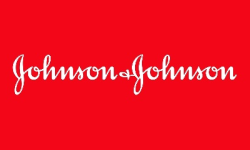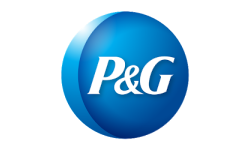
Global Textured Soy Protein Market by Application (Food, Feed), by Product Type (Organic, Conventional, Non-GMO) and Region (North America, Latin America, Europe, Asia Pacific and Middle East & Africa), Forecast To 2028
Summary of the Report
Global textured soy protein markets were valued at USD 3.53 Billion in 2018. They are expected to grow at a 9.1% compound annual growth rate (CAGR), from 2019 to 2025. The market for texture soy protein will be driven by increasing demand for protein-rich foods over the forecast period. Consumers are choosing low-carb, low-fat foods due to growing health awareness. This is driving product demand.
Market growth is also expected to be supported by the increasing demand for functional drinks. Market growth will be further driven by the increasing demand for Ready to Eat (RTE) foods products due to a busy lifestyle. Market expansion will also be driven by the rising popularity of textured soybean protein as a meat replacement.
According to research published in 2018, the demand for meat substitutes as well as other plant-based alternatives for animal-based products such milk, yogurt, cheese increased by 25% and 17% respectively. Due to increasing awareness and environmental concerns about animal cruelty, manufacturers are increasingly introducing meat analog products. This is expected to increase product demand.
Non-GMO soybean protein was the most popular product segment in 2018. It is expected to continue its dominance throughout the forecast period. North America was the largest region market in 2018, but Asia Pacific is expected be the fastest-growing at a CAGR 11.4% during the forecast period.
Product Type Insights
The market share for non-GMO products was 53.9% in 2018. It is expected to continue its dominance during the forecast period. The segment will be driven by growing awareness of the negative effects of Genetically Modified crops (GM) and increased demand for non-GMO products. Non-GMO crops have also been boosted by restrictions in India and China on genetically modified soybean beans.
From 2019 to 2025, the organic segment will experience the fastest CAGR at 9.4%. This segment is driven by an increase in global demand for organic foods. The demand for organic food & beverages containing texture soy protein has increased due to the hectic work schedule. A rising health consciousness has also increased demand for additive- and preservative-free products.
Application Insights
The global market for food applications was the largest in 2018, and it is expected to grow at a 9.3% CAGR from 2019 to 2025. Because of the growing demand for vegetarian alternatives to meat, textured vegetable proteins are increasingly popular. This will fuel the segment's growth. Soya proteins are a good source of complementing and supplementary proteins. They help increase the solubility and water absorption as well as texture and anti-oxidation.
Soya also helps to prevent many chronic diseases such as hypertension, heart disease, certain cancers and diabetes. It is also a good source of major amino acid and helps maintain body function. It is therefore highly sought after in the food industry. The Feed segment will see a 8.5% CAGR over the forecast period. Because of its unique combination essential amino acid , soybean meal is widely used in poultry and livestock industries as a source of protein.
Regional Insights
North America accounted for half the market share and was the largest region in 2018. Its growth is driven by the increasing vegan population and increased health awareness. Asia Pacific will experience the fastest CAGR, at 11.4%, over the forecast period. The region's market is growing due to an increase in soya beans production and a rising awareness of the health benefits associated with soya beans. China is the region's largest consumer. China accounted for more that 20% of the Asia Pacific market.
Market Share Insights & Key Companies
Global markets are highly competitive. To increase their market share, most companies have adopted business strategies such as mergers & acquisitions and product innovation. The following are some of the most prominent players in the market for textured soy proteins:
-
Archer Daniels Midland Company
-
Cargill, Inc.
-
Wilmar BioEthanol
-
Victoria Group
-
Bremil Group
-
Sonic Biochem
-
CROWN SOYA PROTEIN GROUP
-
HOYA FOOD
-
SHANDONG YuXIN BIO-TECH CO. LTD.
-
Bunge
Up Market Research published a new report titled “Textured Soy Protein Market research report which is segmented by Application (Food, Feed), by Product Type (Organic, Conventional, Non-GMO), By Players/Companies Wilmar BioEthanol, SHANDONG YUXIN BIO-TECH CO LTD, Bunge, Cargill Inc, HOYA FOOD, CROWN SOYA PROTEIN GROUP, Archer Daniels Midland Company, Victoria Group, Bremil Group, Sonic Biochem”. As per the study the market is expected to grow at a CAGR of XX% in the forecast period.
Report Scope
| Report Attributes | Report Details |
| Report Title | Textured Soy Protein Market Research Report |
| By Application | Food, Feed |
| By Product Type | Organic, Conventional, Non-GMO |
| By Companies | Wilmar BioEthanol, SHANDONG YUXIN BIO-TECH CO LTD, Bunge, Cargill Inc, HOYA FOOD, CROWN SOYA PROTEIN GROUP, Archer Daniels Midland Company, Victoria Group, Bremil Group, Sonic Biochem |
| Regions Covered | North America, Europe, APAC, Latin America, MEA |
| Base Year | 2020 |
| Historical Year | 2018 to 2019 (Data from 2010 can be provided as per availability) |
| Forecast Year | 2028 |
| Number of Pages | 201 |
| Number of Tables & Figures | 141 |
| Customization Available | Yes, the report can be customized as per your need. |
The report covers comprehensive data on emerging trends, market drivers, growth opportunities, and restraints that can change the market dynamics of the industry. It provides an in-depth analysis of the market segments which include products, applications, and competitor analysis.

Global Textured Soy Protein Market Report Segments:
The market is segmented by Application (Food, Feed), by Product Type (Organic, Conventional, Non-GMO).
Textured Soy Protein Market research report delivers a close watch on leading competitors with strategic analysis, micro and macro market trend and scenarios, pricing analysis and a holistic overview of the market situations in the forecast period. It is a professional and a detailed report focusing on primary and secondary drivers, market share, leading segments and geographical analysis. Further, key players, major collaborations, merger & acquisitions along with trending innovation and business policies are reviewed in the report.
Key Benefits for Industry Participants & Stakeholders:
- Industry drivers, restraints, and opportunities covered in the study
- Neutral perspective on the market performance
- Recent industry trends and developments
- Competitive landscape & strategies of key players
- Potential & niche segments and regions exhibiting promising growth covered
- Historical, current, and projected market size, in terms of value
- In-depth analysis of the Textured Soy Protein Market
Overview of the regional outlook of the Textured Soy Protein Market:
Based on region, the market is segmented into North America, Europe, Asia Pacific, Latin America and Middle East & Africa (MEA). North America region is further bifurcated into countries such as U.S., and Canada. The Europe region is further categorized into U.K., France, Germany, Italy, Spain, Russia, and Rest of Europe. Asia Pacific is further segmented into China, Japan, South Korea, India, Australia, South East Asia, and Rest of Asia Pacific. Latin America region is further segmented into Brazil, Mexico, and Rest of Latin America, and the MEA region is further divided into GCC, Turkey, South Africa, and Rest of MEA.

Highlights of The Textured Soy Protein Market Report:
- The market structure and projections for the coming years.
- Drivers, restraints, opportunities, and current trends of Textured Soy Protein Market.
- Historical data and forecast.
- Estimations for the forecast period 2028.
- Developments and trends in the market.
1. Food
2. Feed
7. By Product Type:1. Organic
2. Conventional
3. Non-GMO
- Market scenario by region, sub-region, and country.
- Market share of the market players, company profiles, product specifications, SWOT analysis, and competitive landscape.
- Analysis regarding upstream raw materials, downstream demand, and current market dynamics.
- Government Policies, Macro & Micro economic factors are also included in the report.
We have studied the Textured Soy Protein Market in 360 degrees via. both primary & secondary research methodologies. This helped us in building an understanding of the current market dynamics, supply-demand gap, pricing trends, product preferences, consumer patterns & so on. The findings were further validated through primary research with industry experts & opinion leaders across countries. The data is further compiled & validated through various market estimation & data validation methodologies. Further, we also have our in-house data forecasting model to predict market growth up to 2028.
How you may use our products:
- Correctly Positioning New Products
- Market Entry Strategies
- Business Expansion Strategies
- Consumer Insights
- Understanding Competition Scenario
- Product & Brand Management
- Channel & Customer Management
- Identifying Appropriate Advertising Appeals

Reasons to Purchase the Textured Soy Protein Market Report:
- The report includes a plethora of information such as market dynamics scenario and opportunities during the forecast period
- Segments and sub-segments include quantitative, qualitative, value (USD Million,) and volume (Units Million) data.
- Regional, sub-regional, and country level data includes the demand and supply forces along with their influence on the market.
- The competitive landscape comprises share of key players, new developments, and strategies in the last three years.
- Comprehensive companies offering products, relevant financial information, recent developments, SWOT analysis, and strategies by these players.
Chapter 2 Assumptions and Acronyms Used
Chapter 3 Research Methodology
Chapter 4 Textured Soy Protein Market Overview
4.1 Introduction
4.1.1 Market Taxonomy
4.1.2 Market Definition
4.1.3 Macro-Economic Factors Impacting the Market Growth
4.2 Textured Soy Protein Market Dynamics
4.2.1 Market Drivers
4.2.2 Market Restraints
4.2.3 Market Opportunity
4.3 Textured Soy Protein Market - Supply Chain Analysis
4.3.1 List of Key Suppliers
4.3.2 List of Key Distributors
4.3.3 List of Key Consumers
4.4 Key Forces Shaping the Textured Soy Protein Market
4.4.1 Bargaining Power of Suppliers
4.4.2 Bargaining Power of Buyers
4.4.3 Threat of Substitution
4.4.4 Threat of New Entrants
4.4.5 Competitive Rivalry
4.5 Global Textured Soy Protein Market Size & Forecast, 2018-2028
4.5.1 Textured Soy Protein Market Size and Y-o-Y Growth
4.5.2 Textured Soy Protein Market Absolute $ Opportunity
Chapter 5 Global Textured Soy Protein Market Analysis and Forecast by Application
5.1 Introduction
5.1.1 Key Market Trends & Growth Opportunities by Application
5.1.2 Basis Point Share (BPS) Analysis by Application
5.1.3 Absolute $ Opportunity Assessment by Application
5.2 Textured Soy Protein Market Size Forecast by Application
5.2.1 Food
5.2.2 Feed
5.3 Market Attractiveness Analysis by Application
Chapter 6 Global Textured Soy Protein Market Analysis and Forecast by Product Type
6.1 Introduction
6.1.1 Key Market Trends & Growth Opportunities by Product Type
6.1.2 Basis Point Share (BPS) Analysis by Product Type
6.1.3 Absolute $ Opportunity Assessment by Product Type
6.2 Textured Soy Protein Market Size Forecast by Product Type
6.2.1 Organic
6.2.2 Conventional
6.2.3 Non-GMO
6.3 Market Attractiveness Analysis by Product Type
Chapter 7 Global Textured Soy Protein Market Analysis and Forecast by Region
7.1 Introduction
7.1.1 Key Market Trends & Growth Opportunities by Region
7.1.2 Basis Point Share (BPS) Analysis by Region
7.1.3 Absolute $ Opportunity Assessment by Region
7.2 Textured Soy Protein Market Size Forecast by Region
7.2.1 North America
7.2.2 Europe
7.2.3 Asia Pacific
7.2.4 Latin America
7.2.5 Middle East & Africa (MEA)
7.3 Market Attractiveness Analysis by Region
Chapter 8 Coronavirus Disease (COVID-19) Impact
8.1 Introduction
8.2 Current & Future Impact Analysis
8.3 Economic Impact Analysis
8.4 Government Policies
8.5 Investment Scenario
Chapter 9 North America Textured Soy Protein Analysis and Forecast
9.1 Introduction
9.2 North America Textured Soy Protein Market Size Forecast by Country
9.2.1 U.S.
9.2.2 Canada
9.3 Basis Point Share (BPS) Analysis by Country
9.4 Absolute $ Opportunity Assessment by Country
9.5 Market Attractiveness Analysis by Country
9.6 North America Textured Soy Protein Market Size Forecast by Application
9.6.1 Food
9.6.2 Feed
9.7 Basis Point Share (BPS) Analysis by Application
9.8 Absolute $ Opportunity Assessment by Application
9.9 Market Attractiveness Analysis by Application
9.10 North America Textured Soy Protein Market Size Forecast by Product Type
9.10.1 Organic
9.10.2 Conventional
9.10.3 Non-GMO
9.11 Basis Point Share (BPS) Analysis by Product Type
9.12 Absolute $ Opportunity Assessment by Product Type
9.13 Market Attractiveness Analysis by Product Type
Chapter 10 Europe Textured Soy Protein Analysis and Forecast
10.1 Introduction
10.2 Europe Textured Soy Protein Market Size Forecast by Country
10.2.1 Germany
10.2.2 France
10.2.3 Italy
10.2.4 U.K.
10.2.5 Spain
10.2.6 Russia
10.2.7 Rest of Europe
10.3 Basis Point Share (BPS) Analysis by Country
10.4 Absolute $ Opportunity Assessment by Country
10.5 Market Attractiveness Analysis by Country
10.6 Europe Textured Soy Protein Market Size Forecast by Application
10.6.1 Food
10.6.2 Feed
10.7 Basis Point Share (BPS) Analysis by Application
10.8 Absolute $ Opportunity Assessment by Application
10.9 Market Attractiveness Analysis by Application
10.10 Europe Textured Soy Protein Market Size Forecast by Product Type
10.10.1 Organic
10.10.2 Conventional
10.10.3 Non-GMO
10.11 Basis Point Share (BPS) Analysis by Product Type
10.12 Absolute $ Opportunity Assessment by Product Type
10.13 Market Attractiveness Analysis by Product Type
Chapter 11 Asia Pacific Textured Soy Protein Analysis and Forecast
11.1 Introduction
11.2 Asia Pacific Textured Soy Protein Market Size Forecast by Country
11.2.1 China
11.2.2 Japan
11.2.3 South Korea
11.2.4 India
11.2.5 Australia
11.2.6 South East Asia (SEA)
11.2.7 Rest of Asia Pacific (APAC)
11.3 Basis Point Share (BPS) Analysis by Country
11.4 Absolute $ Opportunity Assessment by Country
11.5 Market Attractiveness Analysis by Country
11.6 Asia Pacific Textured Soy Protein Market Size Forecast by Application
11.6.1 Food
11.6.2 Feed
11.7 Basis Point Share (BPS) Analysis by Application
11.8 Absolute $ Opportunity Assessment by Application
11.9 Market Attractiveness Analysis by Application
11.10 Asia Pacific Textured Soy Protein Market Size Forecast by Product Type
11.10.1 Organic
11.10.2 Conventional
11.10.3 Non-GMO
11.11 Basis Point Share (BPS) Analysis by Product Type
11.12 Absolute $ Opportunity Assessment by Product Type
11.13 Market Attractiveness Analysis by Product Type
Chapter 12 Latin America Textured Soy Protein Analysis and Forecast
12.1 Introduction
12.2 Latin America Textured Soy Protein Market Size Forecast by Country
12.2.1 Brazil
12.2.2 Mexico
12.2.3 Rest of Latin America (LATAM)
12.3 Basis Point Share (BPS) Analysis by Country
12.4 Absolute $ Opportunity Assessment by Country
12.5 Market Attractiveness Analysis by Country
12.6 Latin America Textured Soy Protein Market Size Forecast by Application
12.6.1 Food
12.6.2 Feed
12.7 Basis Point Share (BPS) Analysis by Application
12.8 Absolute $ Opportunity Assessment by Application
12.9 Market Attractiveness Analysis by Application
12.10 Latin America Textured Soy Protein Market Size Forecast by Product Type
12.10.1 Organic
12.10.2 Conventional
12.10.3 Non-GMO
12.11 Basis Point Share (BPS) Analysis by Product Type
12.12 Absolute $ Opportunity Assessment by Product Type
12.13 Market Attractiveness Analysis by Product Type
Chapter 13 Middle East & Africa (MEA) Textured Soy Protein Analysis and Forecast
13.1 Introduction
13.2 Middle East & Africa (MEA) Textured Soy Protein Market Size Forecast by Country
13.2.1 Saudi Arabia
13.2.2 South Africa
13.2.3 UAE
13.2.4 Rest of Middle East & Africa (MEA)
13.3 Basis Point Share (BPS) Analysis by Country
13.4 Absolute $ Opportunity Assessment by Country
13.5 Market Attractiveness Analysis by Country
13.6 Middle East & Africa (MEA) Textured Soy Protein Market Size Forecast by Application
13.6.1 Food
13.6.2 Feed
13.7 Basis Point Share (BPS) Analysis by Application
13.8 Absolute $ Opportunity Assessment by Application
13.9 Market Attractiveness Analysis by Application
13.10 Middle East & Africa (MEA) Textured Soy Protein Market Size Forecast by Product Type
13.10.1 Organic
13.10.2 Conventional
13.10.3 Non-GMO
13.11 Basis Point Share (BPS) Analysis by Product Type
13.12 Absolute $ Opportunity Assessment by Product Type
13.13 Market Attractiveness Analysis by Product Type
Chapter 14 Competition Landscape
14.1 Textured Soy Protein Market: Competitive Dashboard
14.2 Global Textured Soy Protein Market: Market Share Analysis, 2019
14.3 Company Profiles (Details – Overview, Financials, Developments, Strategy)
14.3.1 Wilmar BioEthanol
14.3.2 SHANDONG YUXIN BIO-TECH CO LTD
14.3.3 Bunge
14.3.4 Cargill Inc
14.3.5 HOYA FOOD
14.3.6 CROWN SOYA PROTEIN GROUP
14.3.7 Archer Daniels Midland Company
14.3.8 Victoria Group
14.3.9 Bremil Group
14.3.10 Sonic Biochem
The global Textured Soy Protein market has been segmented based on
By Application
- Food
- Feed
- Organic
- Conventional
- Non-GMO
- Asia Pacific
- North America
- Latin America
- Europe
- Middle East & Africa
- Wilmar BioEthanol
- SHANDONG YUXIN BIO-TECH CO LTD
- Bunge
- Cargill Inc
- HOYA FOOD
- CROWN SOYA PROTEIN GROUP
- Archer Daniels Midland Company
- Victoria Group
- Bremil Group
- Sonic Biochem
Related Reports
Some other reports from this category!



















